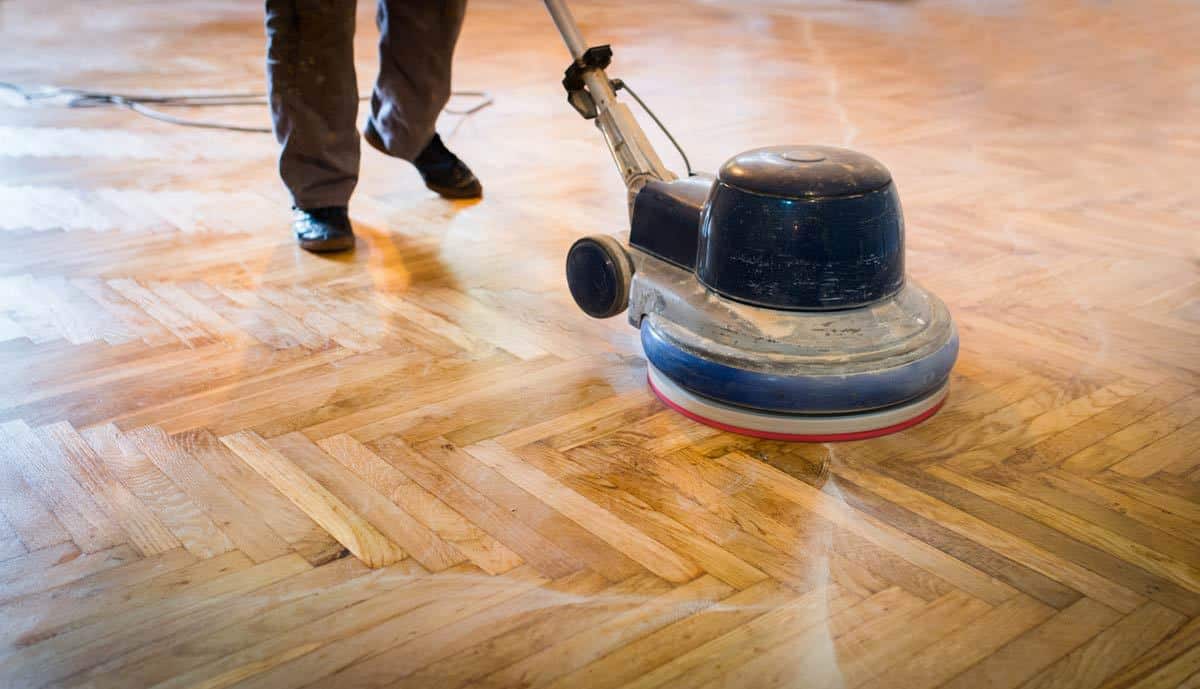How To Sand Hardwood Hard Floors Like A Pro

Sanding hardwood floors to get rid of scratches, change the stain, and give it a great new finish can certainly be a great DIY project that will undoubtedly increase the value of your home or condo. You'll also save a good bit of money by handling the labor yourself instead of hiring contractors. Before you decide to take on this multi-step process for the entire floor, it's important to understand exactly what you're getting into and make sure you have or can rent the right equipment, such as the correct machine and the right grit of sandpaper for each stage. I say this because it's not as simple as it sounds, especially if you are unfamiliar with this type of work and the steps required to do it right. Thankfully, this article should help explain what is necessary to complete the job effectively and in a timely manner. A right tool is also a great factor, best belt sander reviews are also available.
Getting Started
The first thing you'll want to do is to use sheet plastic to cover any vents or hanging light fixtures that are in the vicinity of where you'll be sanding. This will prevent any dust from invading these areas and make cleaning up afterward much easier. Also, if possible, you may also want to attach an vacuum to your sander in order to suck up all the dust, which will, again, make cleaning easier.
The next step is to carefully inspect the floors for nails, staples, or any other metal fastener that may be protruding a little bit out of the floor and hammer them down. This often-forgotten step will ensure that your sandpaper won't get torn up from getting stuck on a nail during the sanding. Everybody who has ever sanded a floor has missed a nail at least once and cursed themselves as they rip up a fresh sheet of sandpaper. You should also remove any metal vent covers before your start as well.
If you don't already own a drum sander (which most people don't because they are thousands of dollars) your next step would be to rent one and learn how to use correctly. Unless you are doing a small area and are comfortable using a belt sander, you are definitely going to want to rent equipment for sanding hardwood floors. These can be rented from a tool rental place or a big box hardware store such as home depot. The folks who handle the rental will be more than happy to teach you how to use the sander if you don't already know. It's certainly not rocket science, but the experts can explain how it works and usually will offer up a few helpful hints on how to make using the drum sander a bit easier. Also, depending on how big the area is that you plan to sand, you'll either want to use a standing orbital sander for larger areas or a smaller handheld sander for more compact spots. You'll also need to rent or buy an edger in order to sand the corners of the room that the big sander can't get to.

Choose the Right Tools
Depending on what kind of condition your hardwood floor is in you'll then need to decide what grit sandpaper you'll need to start with. What is the best sander? Interesting to find out. If your floor is in pretty bad shape your best bet would be to use 24 grit sandpaper, as this is typically used for floors that have many flaws and haven't been sanded in 20+ years. For floors in decent shape, you'll want to start with a 36 grit sandpaper, which is the most common choice for floors that are in decent condition or that perhaps you just want to change the color versus really address blemishes. You'll also want to use the same type of grit with the edger to ensure the corners are getting the same treatment as the rest of the floor. Check out some orbital sanders reviews. Don't forget to have a look on Tacklife PSFS1A belt sander review.
Don't Cut Corners
It's important to know that you'll need to make about four passes with the sander and edger in order to ensure that your hardwood floor is perfectly sanded. Each pass also requires a step to a finer sandpaper. You'll use 24 or 36 grit for your initial pass, then 60 grit the second time around, 80 grit on the third and finally 100 grit to finish up. These rules are not set in stone and if you feel satisfied after the second or third pass you can skip the others, but it's best to be prepared for all four passes. Also, if you use 24 grit on the first pass you shouldn't skip directly to 60 grit, but rather use 36 grit next, 60… 80… then 100 if necessary. That said, you'll probably want to finish with 100 so you have a smooth surface for the finish to be applied.
Once you're ready to go you'll want to begin by sanding hardwood floors one room at a time. You should start at the wall and run the sander along the wood floor until you are nearly at the opposite end. You'll then need to use the handle that controls the sanders height and use it to lift it off of the floor in order for you to turn around. When you have maneuvered yourself and the sander to face back to the other side of the room, use the handle to drop it back down to the floor and proceed. You'll want to do this every time you reach the wall to turn around in order to prevent damage to the floor. You'll continue this until every room is finished and then sand the spots close to the walls and corners using the edger with the same type of git paper used earlier.
Keep it Clean
When you are finished with the edger you'll then want to sweep or vacuum each room to get rid of dust and sandpaper material in order to prepare for the next pass. Be warned, sanding creates a ton of dust and you don't want to be breathing this stuff in. We recommend you use a mask to cover your nose and mouth while sanding. You'll then apply the next type of grit in the sequence and do each room again then sweep or vacuum. This process is repeated twice more, or until you are satisfied that the floor is properly sanded.
It's important to make sure you are sanding with the natural grain of the floor and moving at a continuous and somewhat quick but steady pace. You shouldn't stop in one place for more than a couple of seconds because that will over sand that spot making it inconsistent with the rest of the room and likely creating uneven grooves. It's definitely worthwhile to look at a couple of YouTube videos of people using the drum and edge sanders in order to a good feel of how to move with them.
You can also use an orbital sander to reach pretty much every section of the room except the corners which will decrease or eliminate the need to use an edger.
The multi-step process of sanding hardwood floors is definitely something anyone can pick up and to do, but it does require a bit of patience and learning in order for it to be done correctly. Hopefully, this article will get you well on your way to saving money and making your hardwood floor look brand new again.
